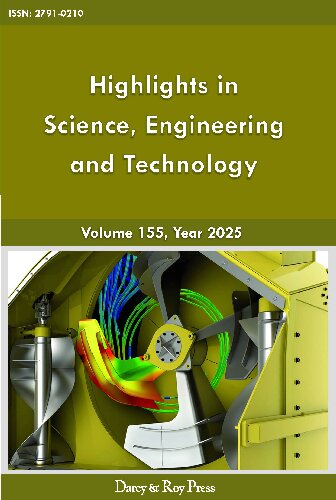Research On Optimal Allocation of Hu Sheep Breeding Based on Stochastic Difference Equations
DOI:
https://doi.org/10.54097/a70zbe23Keywords:
Difference equations, Hu sheep breeding, Genetic Algorithm, Stochastic processes.Abstract
This study addresses the dynamic resource allocation problem in large-scale Hu sheep farming by establishing a production cycle model based on stochastic difference equations. Through systematic analysis of seven production stages (mating period, pregnancy confirmation, etc.), we develop a population dynamic system incorporating multi-dimensional state variables. Three critical stochastic factors—conception success rate, gestation duration variance, and lambing number variation—are innovatively integrated using composite probability models for stochastic process characterization. An improved Genetic Algorithm (GA) is employed to optimize multiple parameters including ram-to-ewe ratio, lactation duration, and sheep pen allocation, constructing a nonlinear programming model with dynamic pen utilization cost functions and production constraints. Simulation experiments demonstrate that optimized key production parameters significantly reduce spatial utilization costs while maintaining annual yield targets, validating the model's effectiveness in balancing production efficiency and cost control. This research provides a decision-making framework for large-scale breeding operations through synergistic optimization of stochastic process modeling and intelligent algorithms, offering substantial practical guidance value.
Downloads
References
[1] HAN Yufen. Transformation from Tradition to Modernity: A Brief Analysis on the Development of Hu Sheep Farming in Huzhou since the 1950s [J]. Ancient and Modern Agriculture, 2024(4): 38-47.
[2] ZHUOMA. Optimization Strategies for Daily Management in Large-scale Farming of Multiparous Hu Sheep [J]. Contemporary Animal Husbandry, 2024(10): 112-113.
[3] ZHOU Rongze. Practical Experiences in Demonstrating Standardized Breeding Techniques for Hu Sheep [J]. China Animal Husbandry, 2022(3): 83-84.
[4] Puchkova A, Mcfarlane D, Srinivasan R, et al.Resilient planning strategies to support disruption-tolerant production operations[J].International Journal of Production Economics, 2020, 226.
[5] Zhang R, Yang S. Response to the comments on "Adaptive synchronization of fractional-order chaotic systems via a single driving variable"[J]. Nonlinear Dynamics, 2011, 66(4):843-844.
[6] Afzali F, Acar G D, Feeny B F. A Floquet-Based Analysis of Parametric Excitation Through the Damping Coefficient[J]. Journal of Vibration and Acoustics, 2020, 143(4):1-23.
[7] North J S, Wikle C K, Schliep E M. A Bayesian Approach for Data-Driven Dynamic Equation Discovery[J]. Journal of Agricultural, Biological and Environmental Statistics, 2022, 27(4):728-747.
[8] Yan B, Li Y, Qin Y, et al.Spatial layout planning of intensive pig farms in the suburb: a case study of Nanyu, China[J].Environmental Science and Pollution Research, 2022(29):29.
[9] Han C, Wang G, Zhang Y, et al.Analysis of the temporal and spatial evolution characteristics and influencing factors of China's herbivorous animal husbandry industry[J].PLOS ONE, 2020, 15.
[10] ZHAO Zhida. Optimization and Application of Hu Sheep Breeding Techniques [D]. Chinese Academy of Agricultural Sciences, 2020.
[11] Pan Yang. Research on Large-scale Breeding Models, Growth and Development, and Reproductive Performance of Hu Sheep [D]. Northwest A&F University, 2018.
[12] Holland J H. Adaptation in Natural and Artificial Systems[J]. 1975.
Downloads
Published
Issue
Section
License
Copyright (c) 2025 Highlights in Science, Engineering and Technology

This work is licensed under a Creative Commons Attribution-NonCommercial 4.0 International License.


















